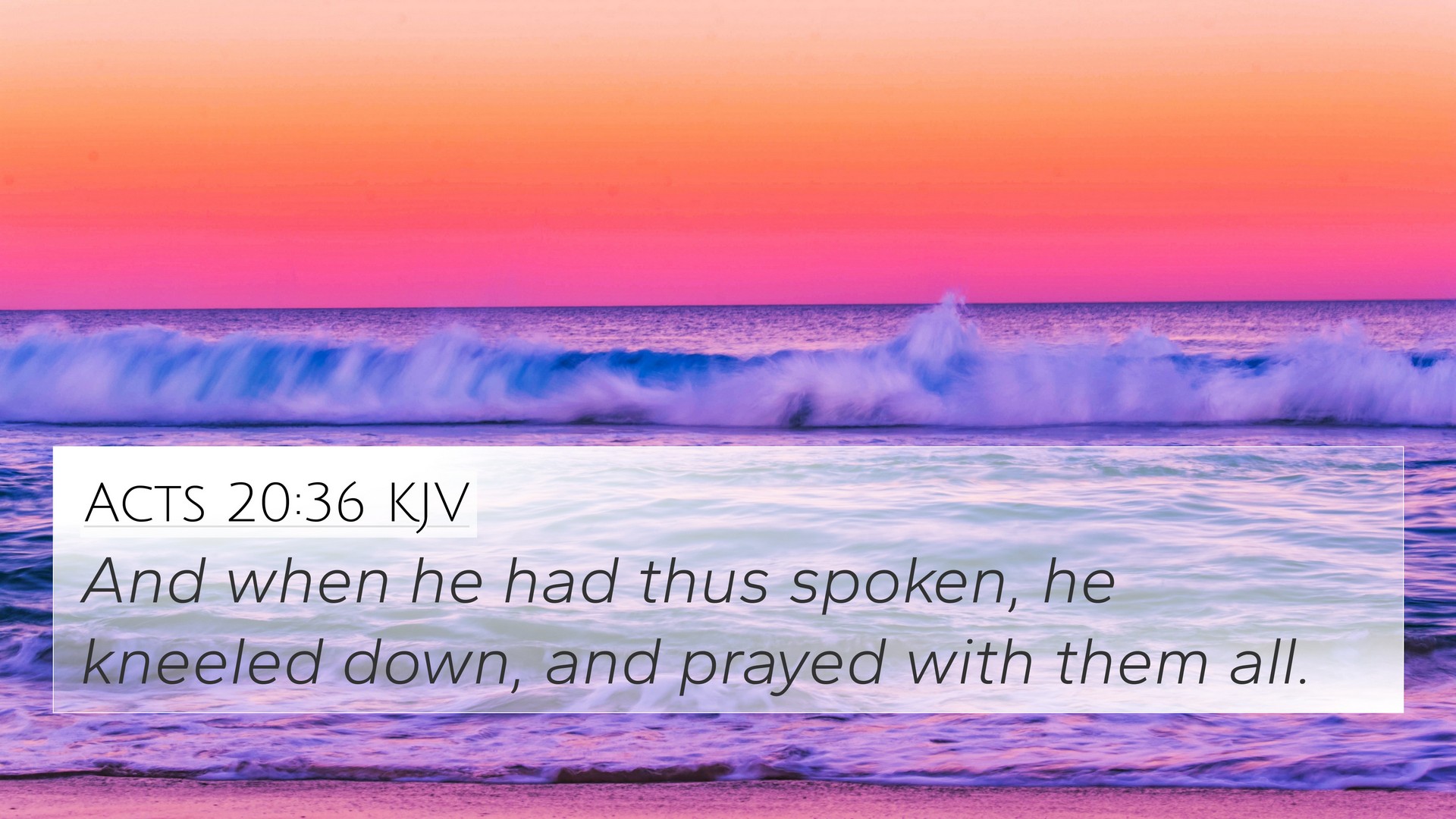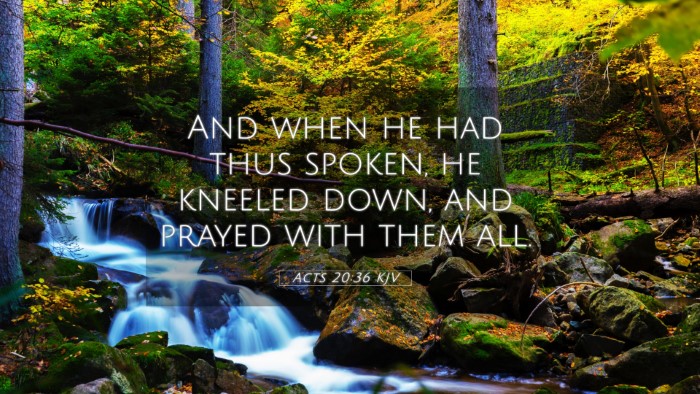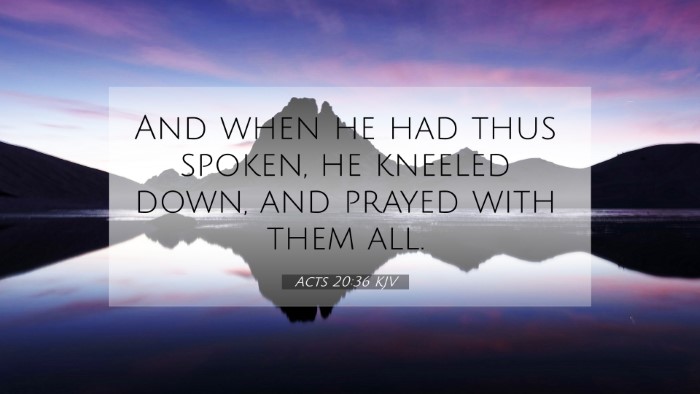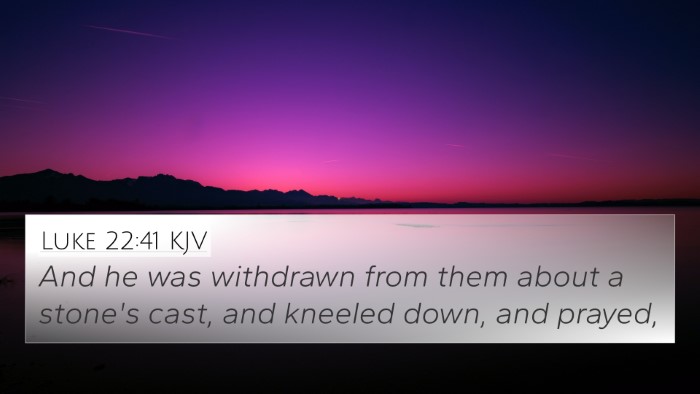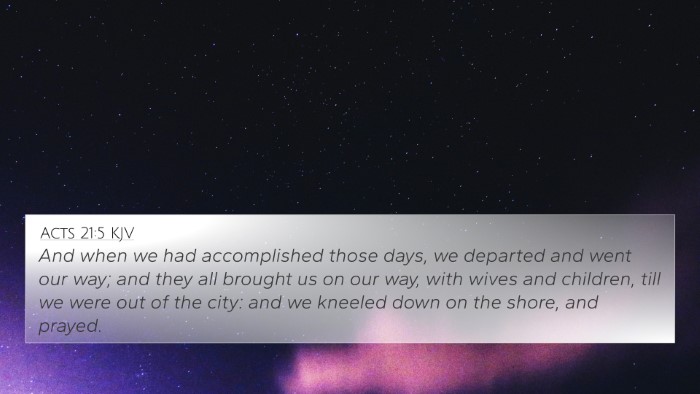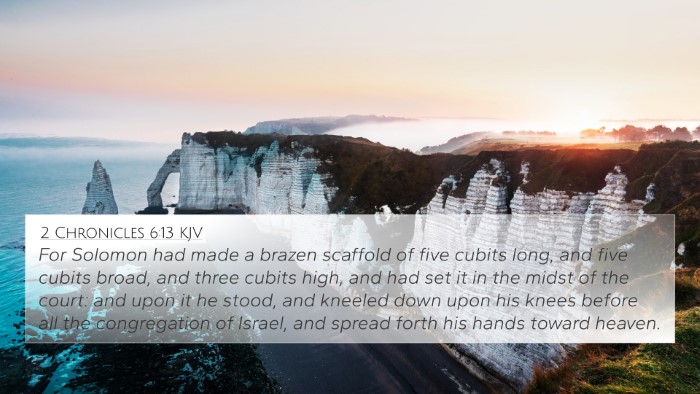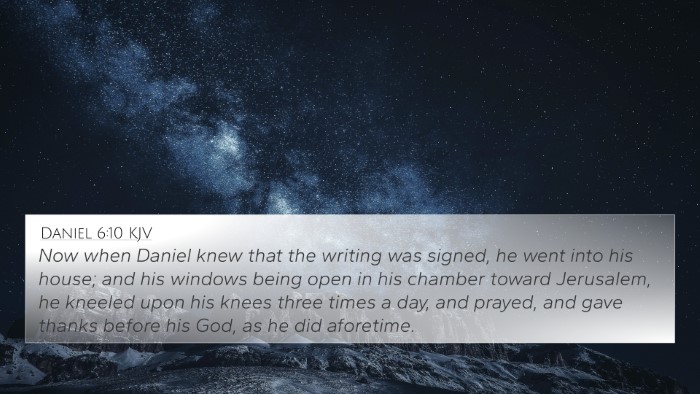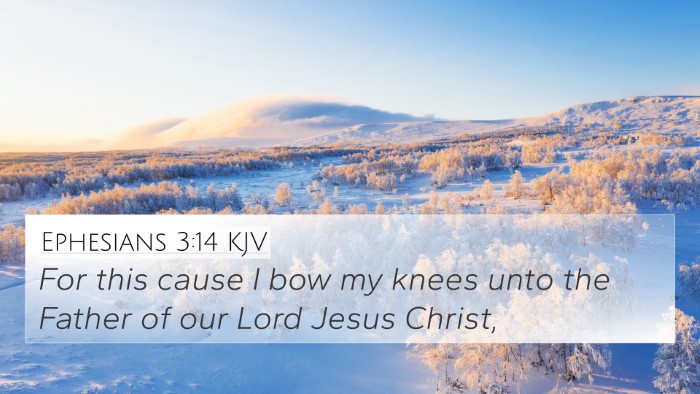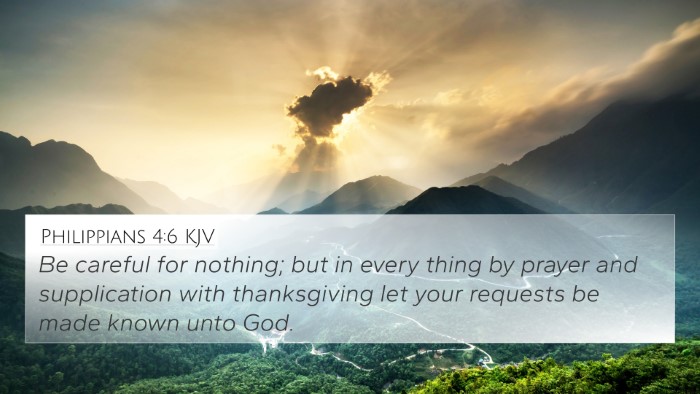Understanding Acts 20:36
In Acts 20:36, we see the Apostle Paul engaging in a significant moment with the elders of the Ephesian church. The verse states:
"And when he had said these things, he kneeled down and prayed with them all."
This passage encapsulates a poignant farewell, marking a crucial transitional moment in Paul's ministry. Below, we explore various interpretations and meanings derived from public domain commentaries, offering a comprehensive understanding of this verse.
1. Significance of Prayer
Matthew Henry emphasizes the importance of prayer in communal relationships. Paul's kneeling to pray signifies humility and reverence before God. It demonstrates the earnestness of his supplication for the elders and the church's future, underlining prayer as a vital tool in Christian fellowship and support.
Albert Barnes adds that this act of praying together not only strengthens the bonds among believers but also invites divine guidance in their endeavors. It reflects the belief that prayer unites the body of Christ and highlights the interconnectedness of their spiritual journey.
2. Farewell and Emotional Depth
This farewell marks Paul's departure, filled with emotional gravity. Adam Clarke notes that this event was bittersweet, as Paul deeply cared for the church. His actions reveal the challenge of separation in ministry, where personal connections foster both joy in shared faith and sorrow in parting.
The emotional depth of this scene sets a precedent for the relational dimension of church leadership, emphasizing that leaders must cultivate personal bonds with their congregations.
3. Community and Leadership
The act of kneeling while praying for the elders highlights the theme of community in leadership. Matthew Henry suggests that this exemplifies how leaders bear the burden of their flock and underlines the vital role of spiritual leaders in guiding and praying for their church members.
4. Biblical Cross-References
Acts 20:36 connects with several other verses providing deeper insights:
- 1. Philippians 1:3-5 - Paul's affection for the church at Philippi and his prayers for them echo his sentiments in Acts.
- 2. James 5:16 - The call to pray for one another resonates with Paul's communal prayer approach.
- 3. 1 Thessalonians 5:17 - Emphasizes the importance of continuous prayer similar to Paul’s actions.
- 4. 2 Corinthians 1:11 - Indicates the collective prayer of believers for one another, paralleling Paul's communion with the Ephesian church.
- 5. Ephesians 1:16-17 - builds further upon Paul's prayer life and concern for the church's spiritual growth.
- 6. Romans 12:12 - Encourages prayer and perseverance, mirroring Paul's heartfelt intercession.
- 7. Colossians 1:9 - Underlines Paul's commitment to praying for the churches he loved.
5. Themes of Loss and Hope
Acts 20:36 portrays themes of loss intertwined with hope. As Paul departs, he leaves behind a legacy of faith and guidance, which Albert Barnes articulates as essential for the leaders in the church. His prayer signifies entrusting their future to God, reinforcing the belief that while human leaders may depart, the divine presence remains.
6. Inter-Biblical Dialogue
Inter-Biblical dialogue becomes evident by comparing Acts with the teachings of Jesus and the apostles, further reflecting the communal aspect of faith. This passage speaks to the unity in the body of Christ as seen in John 17:20-21, where Jesus prayed for the unity of believers.
7. Practical Application for Believers
For contemporary believers, Acts 20:36 serves as a profound reminder of the essential role of prayer in community life. Adam Clarke encourages believers to emulate this example by being diligent in prayer for their communities and lifting each other up in times of need.
This passage also asks Christians to evaluate their relationships within the body of Christ, fostering an atmosphere of support, love, and accountability.
Conclusion
In conclusion, Acts 20:36 presents a multifaceted exploration of prayer, community, and the emotional weight of leadership. The reflections from commentators reveal the depth of spiritual relationships and the importance of entrusting the future of the church to God through prayer. As believers seek to understand this verse, they can link it with other scriptures to form a robust theology of prayer and community, creating a richer spiritual tapestry through Bible verse cross-references.
By exploring the connections between this verse and related scriptures, one can appreciate the holistic view of faith, encouraging deeper study and understanding of one’s role within the church.
